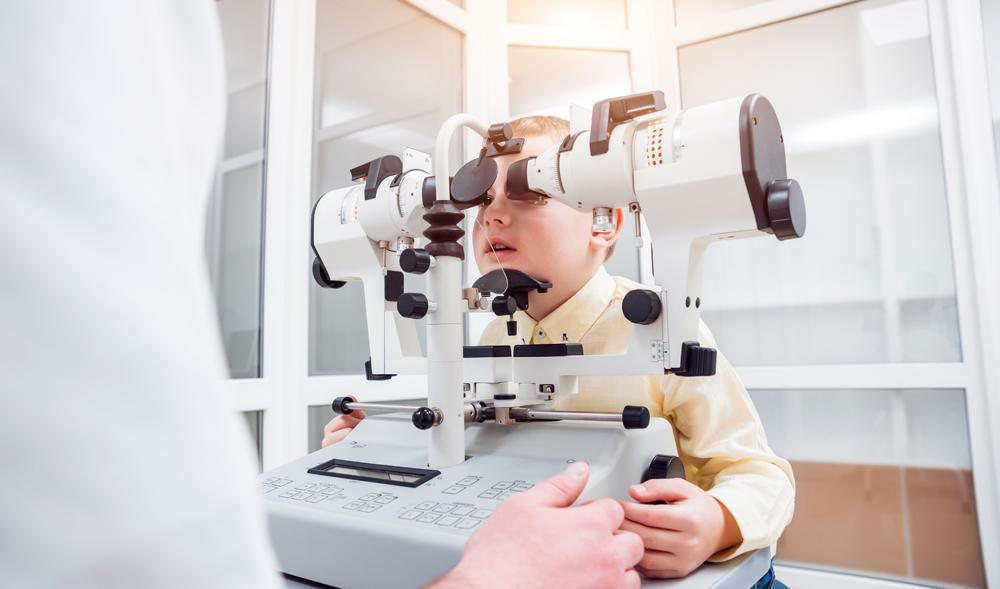Comprehending the Numerous Eye Conditions Dealt With by Specialized Eye Treatment Professionals
In the world of eye care, specialized experts play an essential duty in diagnosing and treating a vast array of eye conditions. As we get started on this exploration of the different eye problems addressed by specialized eye treatment professionals, it ends up being obvious that the intricate web of eye health holds a myriad of interesting understandings waiting to be revealed.
Usual Refractive Errors
Refractive errors are typical aesthetic problems triggered by a flaw in the eye's capability to appropriately concentrate light, resulting in obscured vision. One of the most prevalent sorts of refractive errors consist of nearsightedness (nearsightedness), hyperopia (farsightedness), astigmatism, and presbyopia. Nearsightedness happens when the eyeball is as well lengthy or the cornea is too curved, causing distant objects to appear blurry. Hyperopia, on the other hand, happens when the eyeball is too brief or the cornea is also level, resulting in close-by items running out emphasis. Astigmatism is identified by an irregularly designed cornea, causing altered or obscured vision in all ranges. Presbyopia is an age-related condition where the lens loses its flexibility, making it difficult to focus on close objects.
These refractive mistakes can be dealt with with various approaches, including spectacles, contact lenses, or refractive surgical procedure. Eye care specialists play an essential duty in identifying and taking care of refractive errors to aid individuals achieve more clear vision and improve their lifestyle.
Age-Related Eye Conditions
As people age, their eyes might be vulnerable to a selection of conditions past refractive mistakes that can affect their vision and total ocular wellness. Age-related eye conditions prevail and can substantially affect the lifestyle for older grownups. Among the most widespread age-related eye conditions is age-related macular degeneration (AMD), a condition that causes main vision loss and can make activities like analysis and driving tough. refractive surgeries in al. Cataracts, another common problem amongst older individuals, trigger clouding of the eye's all-natural lens, bring about blurred vision. Glaucoma, defined by damage to the optic nerve, is additionally extra prevalent with age and can lead to outer vision loss or loss of sight if left without treatment. Additionally, presbyopia, a condition where the eye's lens sheds flexibility, is a natural component of aging and brings about difficulty concentrating on close things. Normal eye exams with specialized eye care experts are critical for early detection and administration of these age-related eye problems to maintain vision and keep eye wellness as people age.
Vision-Threatening Illness
Vision-threatening diseases include a variety of major ocular problems that have the possible to dramatically influence a person's vision and general visual feature. These conditions present a danger of permanent vision loss otherwise quickly diagnosed and treated by specialized eye treatment specialists. Some typical vision-threatening diseases consist of glaucoma, diabetic person retinopathy, age-related macular degeneration (AMD), and retinal detachment.
Glaucoma is a group of eye problems that harm the optic nerve, commonly due to high intraocular stress, leading to additional hints outer vision loss and prospective blindness if left neglected. AMD is a dynamic condition influencing the macula, leading to central vision loss.
Very early discovery, regular eye tests, and prompt intervention are vital in managing vision-threatening illness to maintain eyesight and preserve lifestyle. Specialized eye treatment professionals play an essential role in diagnosing, dealing with, and managing these conditions to stop permanent vision loss.

Corneal Problems
Corneal problems include a spectrum of problems that impact the transparent front component of the eye, referred to as the cornea. These conditions can lead to pain, aesthetic disturbances, and in extreme cases, vision loss. One common corneal problem is keratoconus, where the cornea thins and bulges outward into a cone form, causing astigmatism and blurred vision. Corneal dystrophies, such as Fuchs' dystrophy, cause progressive vision loss due to uncommon deposits in the cornea. Corneal abrasions, often triggered by injury or foreign things, can lead to discomfort, soreness, and sensitivity to light. Furthermore, infections like keratitis can inflame the cornea, possibly leading to scarring and vision disability if not immediately treated. Therapy for corneal disorders varies relying on the specific problem however may include medicines, call lenses, or in severe situations, corneal transplants. Routine eye examinations are essential for early detection and administration of corneal problems to maintain vision and eye health.
Neurological Eye Problems
Neurological eye problems entail disorders that affect the connection in between the eyes and the mind, affecting aesthetic processing and overall eye function. These conditions can show up in numerous means, influencing vision, eye activities, and also the sychronisation between the eyes. One typical neurological eye condition is optic neuritis, defined by swelling of the optic nerve causing vision loss, color desaturation, and pain with eye movement.
An additional substantial problem is nystagmus, where the eyes make repeated, unrestrained movements, affecting visual acuity and deepness assumption. Furthermore, conditions like amblyopia, frequently described as "careless eye," result from abnormal aesthetic advancement in early childhood, leading to reduced vision in one eye.
Neurological eye problems call for customized treatment from experts like neuro-ophthalmologists who have know-how in both neurology and ophthalmology. Medical diagnosis commonly entails a comprehensive eye assessment, imaging research why not try these out studies, and collaboration with specialists to address the underlying neurological concerns impacting the aesthetic system. Treatment strategies can consist of medication, vision treatment, or in severe instances, surgical treatments to manage these complicated problems successfully.

Conclusion
In conclusion, specialized eye care professionals treat a broad variety of eye problems, consisting of typical refractive errors, age-related eye problems, vision-threatening illness, corneal disorders, and neurological eye conditions - refractive surgeries in al. review By comprehending these different problems and seeking proper therapy from eye treatment experts, people can preserve optimal eye wellness and vision. It is necessary to prioritize regular eye exams and comply with recommended therapy plans to maintain and shield one's vision for the future